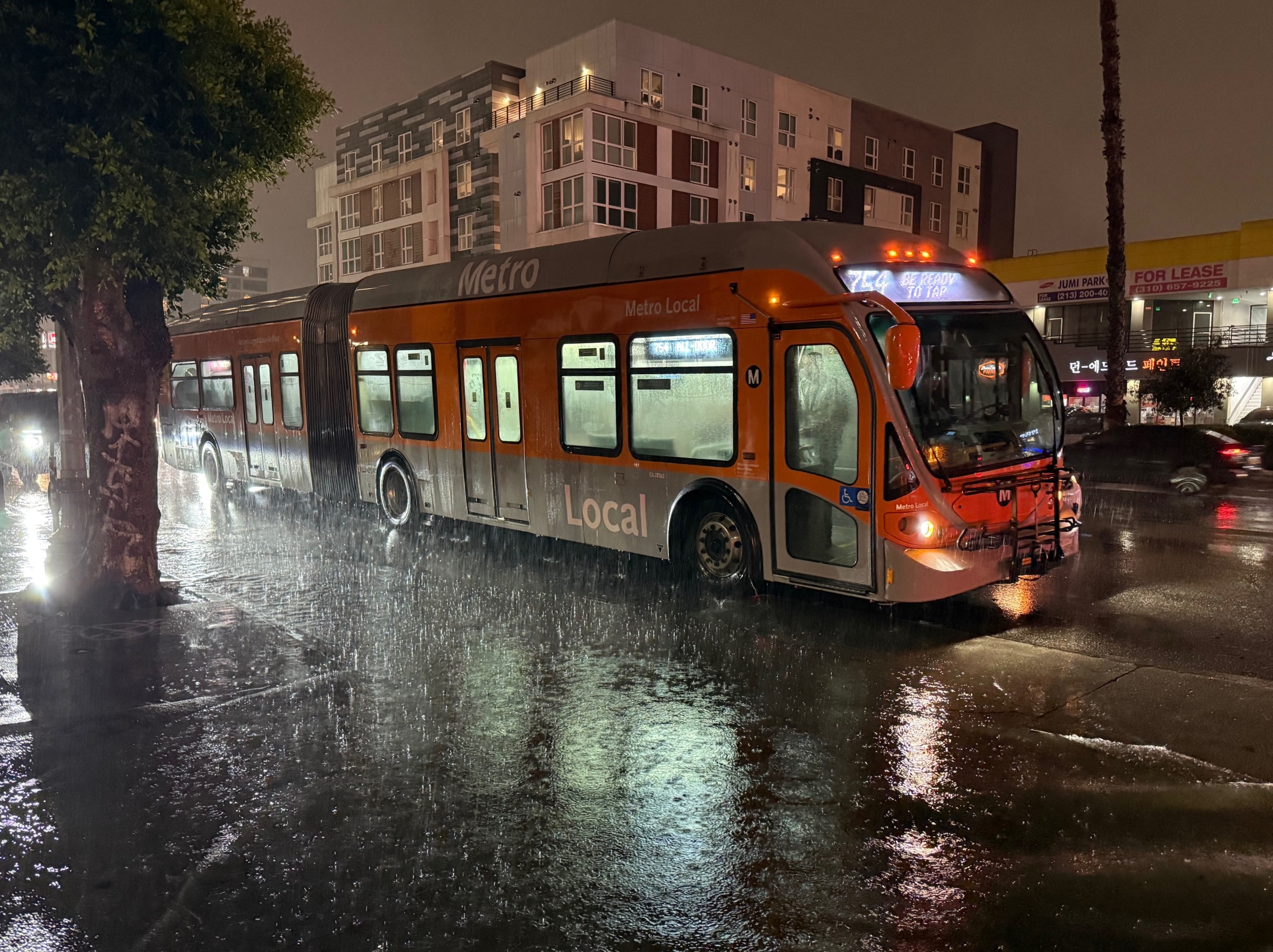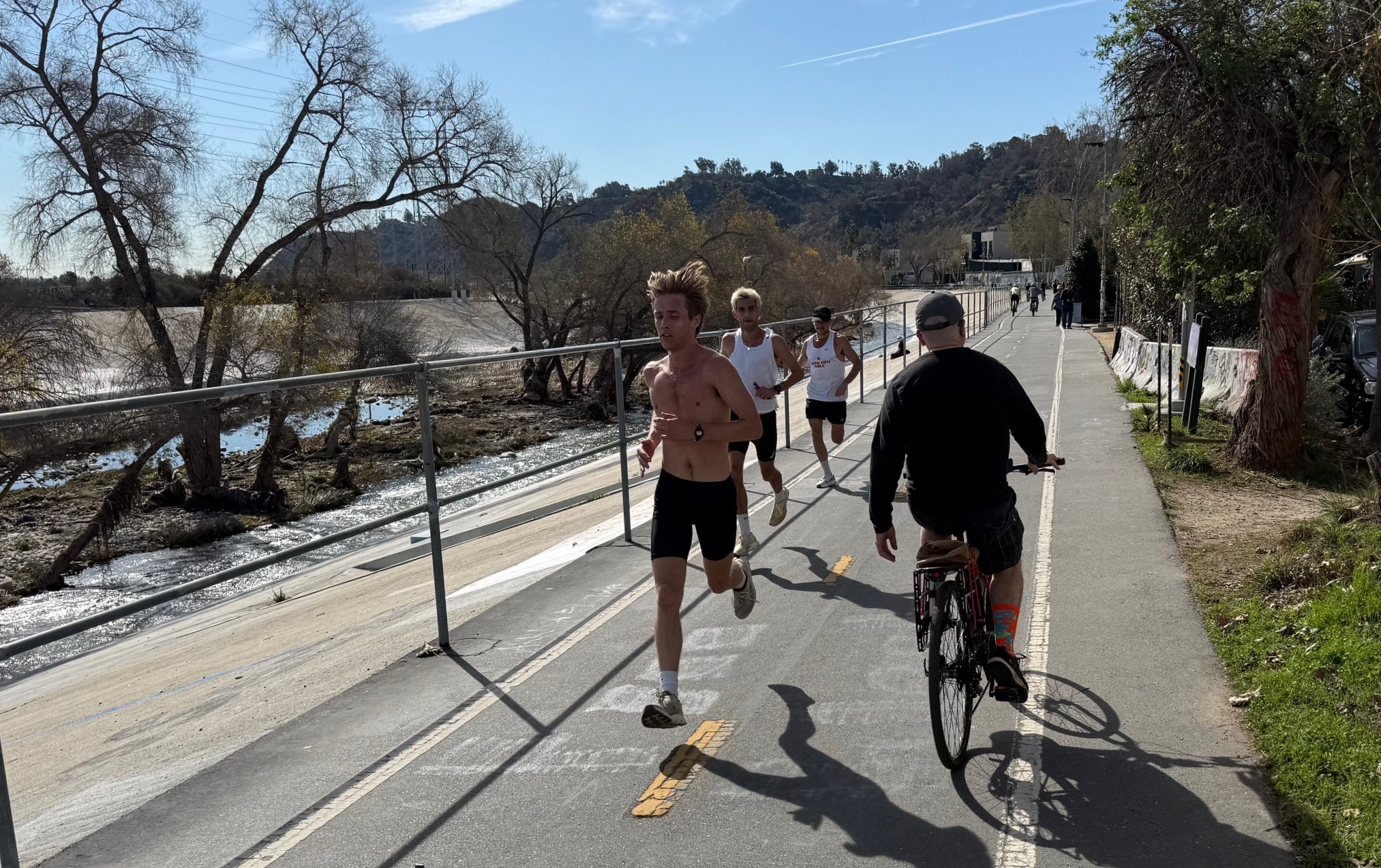 Charles Gandy and Andy Clarke. All Photos: Drew Reed/ LA Loyalist
Charles Gandy and Andy Clarke. All Photos: Drew Reed/ LA LoyalistThe
League of American Bicyclists is something of an
oddity in Washington DC. While most other organizations advocate for
strip mining, carcinogens, and other unpleasantries, the LAB argues for
something which will actually improve people's lives. And while they
have sadly spent most of their 130 year history in the shadow of auto,
highway, and petroleum lobbies, they seem to be making something of a
comeback lately, winning allies in congress as well as the support of Transportation Secretary Ray Lahood.
So it's no surprise that when the league's president Andy
Clarke decided to pay a visit to Long Beach, he was given a grand
tour by the city's mobility coordinator and bike guru Charlie Gandy. The
tour covered some of Long Beach's more prominent bicycle improvements, such as the sharrows, widened sidewalks on first street, and bike boxes
by the marina. Gandy also seized the opportunity to unveil new
developments in the Bike Long Beach plan: wider sidewalks (and possibly
sharrows) on 4th St. between Cherry and Junipero, bike lanes on Junipero
between Ocean and 7th, a second bike blvd. on 6th to CSULB, and a
connector on 3rd from Alamitos to Vista. Lastly, he has a status report for the long-awaited projects
on Vista and Broadway/3rd: the city would accept offers from contractors
next week and begin construction shortly afterward.

Needless to say, Clarke was sufficiently impressed, as were the other people along for the ride: various members of Long Beach Cyclists and prominent bicycle author Jeff Mapes, who happened to be visiting from
Portland. Along the way, Clarke weighed in with comments about the
potential of cycling to improve the livability of communities, as it has
in Europe. Also, he took the opportunity at Long Beach's recently
opened Hub bike kitchen to remind people of the importance of community
involvement in improving bicycling within a city.
From a practical standpoint, it's difficult to tell what the outcome
of this visit will be. As Clarke reminded riders, the primary role of
the LAB is not to work with local governments but to advocate at the
federal level for improved bicycle policy. But being able to point to
local examples of well executed bicycle planning, he explained, is a
highly effective tool for shaping opinions of higher-ups in DC. He
expressed fondness for the design elements Downtown and on Second St,
but he felt the most innovative aspect of the Bike Long Beach program
was the political dexterity of its creation and continued rapid
development within the city.

Though Bike Long Beach may not see any immediate benefit from this
meeting, it was clearly a step forward. If a good relationship with the
LAB materializes into favorable federal policy, the city (and perhaps
the entire region) will be closer to its bike friendly aspirations.






